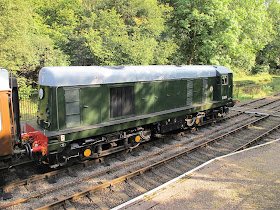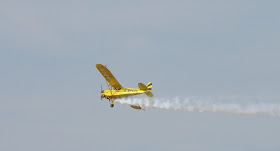Tastefully restored. New timbers can be seen the supporting the stone slab roof and in the repair of the door, and an unobtrusive ramp for disabled access has been added (as ever, click on the picture for a larger image).
As far as we know, the only two-level geared-together tandem-wheel working water mill in the world, Nether Alderley Mill dates from the 12th century. It is owned by The National Trust who had rather neglected it in recent years possibly because it came under the management of Quarry Bank Mill at Styal, a far bigger public attraction which perhaps overshadowed Nether Alderley. Barry Cook, the Mill Engineer at the time (now retired from the Trust) did his best to prevent Nether Alderley Mill from actually collapsing by supporting the rotted roof timbers internally with acro props, and used other stop-gap measures to preserve the fabric of both the building and the wooden mill machinery.
Barry had served in the Royal Navy on the Royal Yacht 'Britannia' and his times on this vessel were a major source of material for his after dinner speaking, the money from which he donated to keeping Nether Alderley standing. It also meant he knew members of the Royal Family, so when Prince Charles visited Styal Mill Barry mentioned his struggles to keep the unique and historically significant Nether Alderley from turning into a ruin. HRH expressed an interest and the National Trust responded with the funds and the will to restore the mill. Well done Barry!
As the Sign says, tours start Spring 2013
A few of us who will be guides when it opens to the public next year had a look round today. I was most impressed by the quality of the restoration work.
The lower of the two water wheels showing renewed buckets
The cog teeth on the gears are made of pear tree wood
Renewed hub and spokes on the lower wheel
Volunteers and National Trust staff on the milling floor
Some of the roof timbers have been dated as about 200 years older than the mill, indicating that the wood used in its construction came from other buildings
The basement which used to be flooded is still damp, with water seeping through the far wall, but a drainage channel now takes it round the edge of the floor to the wheel pit
At the back of the mill a dam which enables the mill pond to provide enough water to power the mill for up to eight hours (the pond would be replenished by its feeder stream during the remaining sixteen hours). Originally, Radnor Mere and a few other smaller lakes fed into the mill pond but today it is replenished only by the Pedley Brook, the small stream that runs into it.
The mill pond, and the sluice controlling the supply of water to the mill's wheels
Two sets of stone grinding wheels occupy the milling floor. Only one set of stones has been restored so far.
.
The mill is hard by the A34, much quieter since the opening of the Alderley bypass. Here is 'The Eagle & Child' which used to be a pub until a selfishly religious Lord Stanley closed many local pubs a long time ago is around the corner. This is the former local shop; it's a guest house now.
.



























































